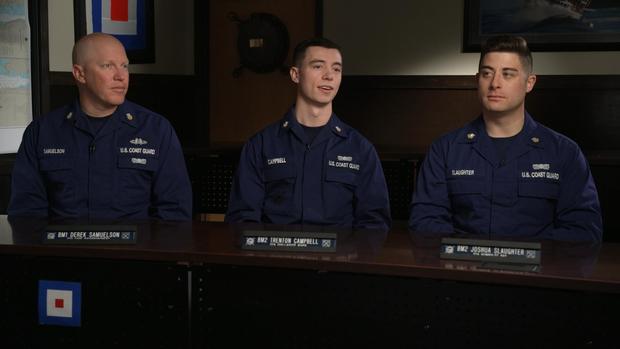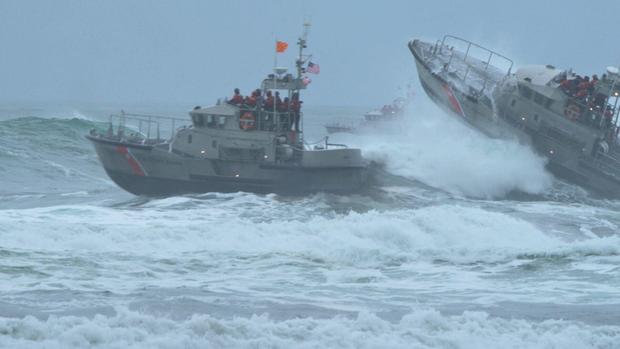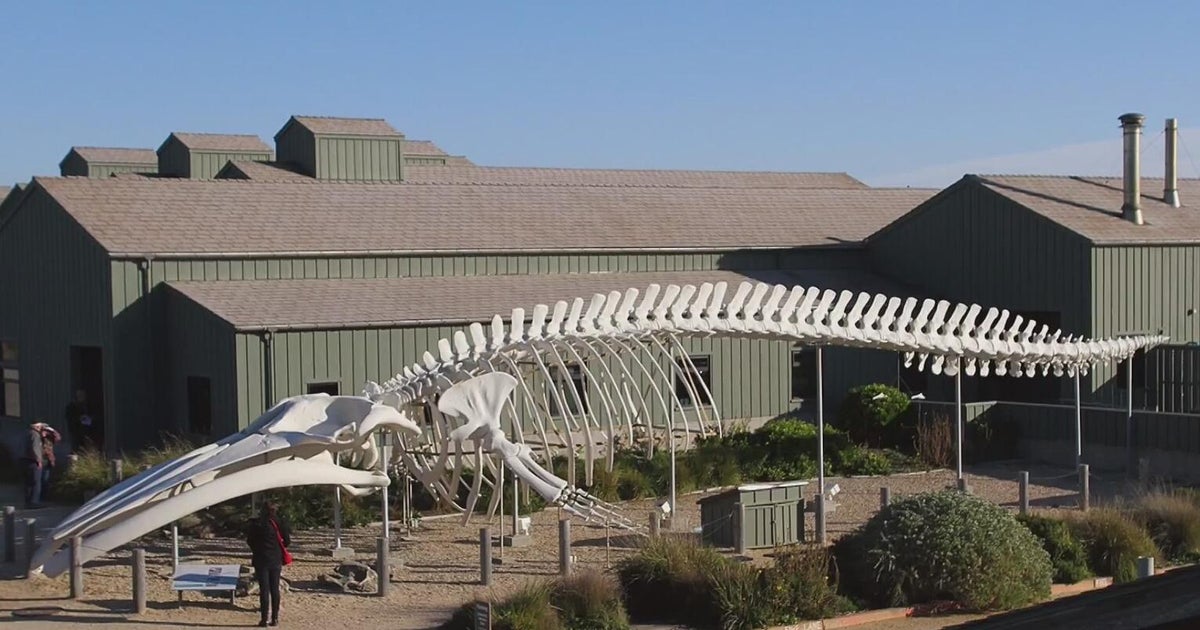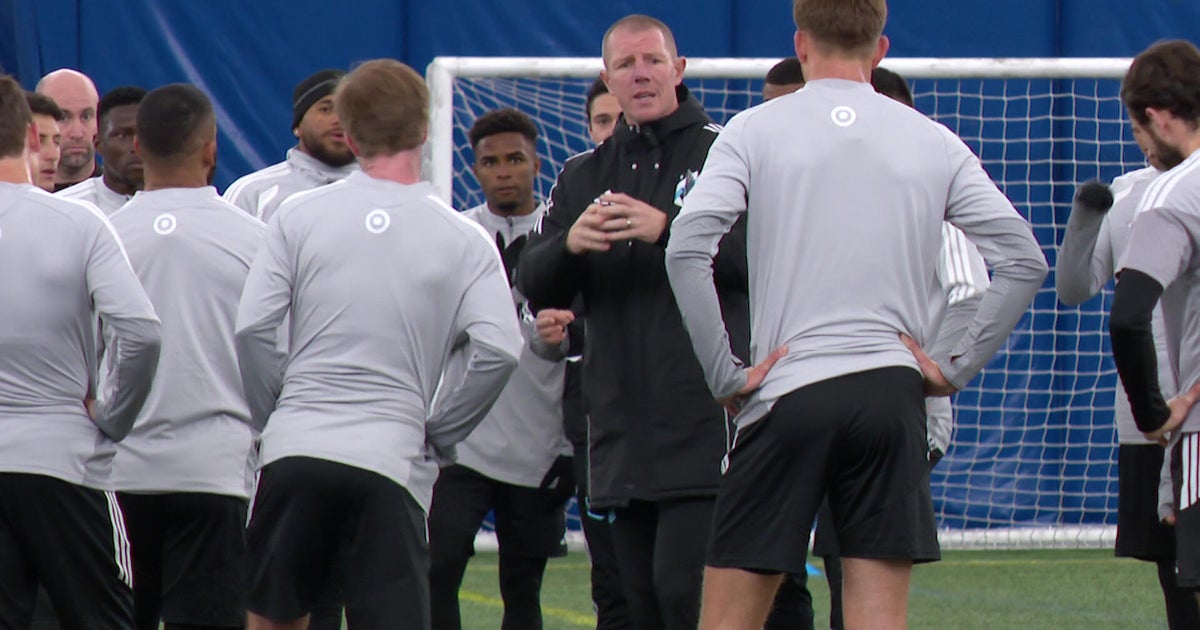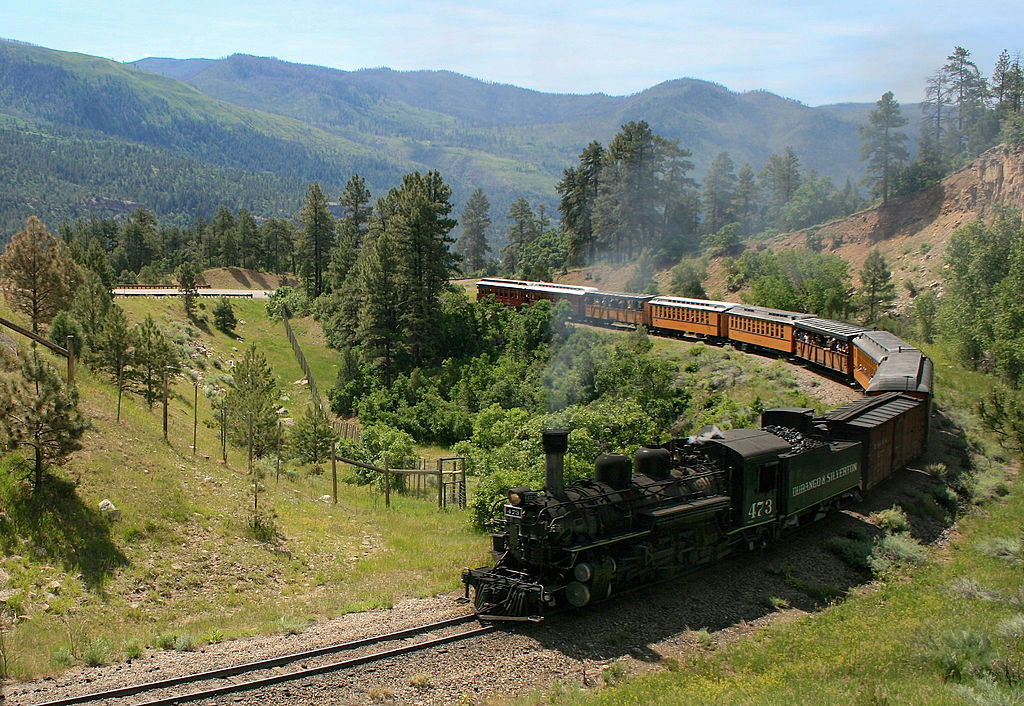Why the Coast Guard's elite surfmen train in an inlet that's wrecked thousands of ships over the centuries
The mayday call came on graduation day in 2023 for the U.S. Coast Guard's elite surfmen trainees, but this wasn't a class exercise.
A boat was taking on water just outside of one of the most dangerous inlets in the U.S. and conditions had gone from mild to mad by the time the students and instructors on three boats, out for one last training run, found it.
"At this point we're facing 25-, 30-foot, 35-foot breaking seas. Fifty knots of winds. It's raining, hailing," said Chief Eric Ceallaigh, who was chief instructor at the Coast Guard's National Motor Lifeboat School.
Ceallaigh was training students at the spot where the Columbia River spills into the Pacific Ocean, an area with some of the worst weather and highest seas in America. Those trainees come here in search of the coveted surfman certification. If they earn it, they go on to drive lifeboats on the most challenging rescue missions.
"It takes a lot to get there," Ceallaigh said. "It takes a special type of person, willing to put themselves into those situations where you're looking up at a 20-foot breaking sea and you're like, 'I want to do this. I want to keep training in this.'"
Who are the surfmen?
Becoming a surfman is sometimes compared to being a Navy SEAL or in the Army Special Forces. Of the approximately 40,000 members of the Coast Guard, only around 130 are active duty surfmen, Tim Crochet, commanding officer of the Lifeboat School, said.
To be certified as a surfman means the Coast Guard trusts you to command and drive a lifeboat on crucial missions. A display of every surfman medallion ever earned — they're called "checks" — is on display at the entrance to the school.
The U.S. Life-Saving Service began rescuing mariners in distress in 1972. Renamed the Coast Guard in 1915, the force now operates 20 Surf Stations around the country and averages more than 5,000 rescues a year.
Crochet's medallion — his "check" — is number 407 on the wall. Ceallaigh has a tattoo of his surfman number, 545, on his hand.
"This is something that's very, very important to me," Ceallaigh said.
At the opening session of the Motor Lifeboat School, Ceallaigh read the Coast Guard's Surfman's Creed aloud.
"I will never unnecessarily jeopardize myself, my boat, or my crew, but will do so freely to rescue those in peril," he said.
Ceallaigh told students they'd be required to memorize the creed before the four-week course was over. This year's class was all male, but there are nearly a dozen female surfmen.
Derek Samuelson, Trenton Campbell and Joshua Slaughter were the three trainees on Ceallaigh's boat for the entire course. Six other trainees in the class were on two other boats with their instructors.
"Most of us are going to be pushing pretty close to four years when we get certified," Samuelson said. "That's almost a college degree worth of training in driving these boats."
Graveyard of the Pacific
Most candidates come here first for a basic course, then to train in heavy weather, and then finally the most challenging of all, the surf class, intentionally scheduled when weather is expected to be the worst.
The area is known as the Graveyard of the Pacific, where the Columbia River spills into the Pacific Ocean at the border between Oregon and Washington.
Up to a million cubic feet of water can pour out of the river's mouth every second, and run right into waves that have been moving across the Pacific for thousands of miles.
Jeff Smith is the curator of the Columbia River Maritime Museum, which has a giant map illustrating how the mouth of the Columbia River has earned the ominous title.
There have been thousands of shipwrecks in the area over the centuries, with at least 700 lives lost. The skeletons of wrecked ships still litter some area beaches.
Training the surfmen
On day one, Ceallaigh and the other instructors took their students out onto the water. The students on Ceallaigh's 47-foot U.S. Coast Guard motor lifeboat studied his every turn of the wheel and called out approaching swells.
"We expose them to a tremendous amount of surf conditions over four weeks, more so than they'd get over years in their own unit," Ceallaigh said.
As he drove into ever-stormier seas on that first day of school, it was clear Ceallaigh would rather be at the helm of his lifeboat than just about anywhere else. But Ceallaigh was also deadly serious about teaching his students how to read every swell.
"This is super dynamic out here, waves shooting in every direction," Ceallaigh said.
When he couldn't outrun a wave, Ceallaigh executed what may be the most important maneuver a lifeboat driver must master: squaring up.
Squaring up is pointing the bow of the boat directly into and through a breaking wave — sometimes a really big breaking wave. In those kinds of conditions, a boat could potentially end up being knocked down, "which is when the boat goes underneath the water, but re-rights in the same direction," Ceallaigh explained.
For the next four weeks, the students took the helm each day, with Ceallaigh signaling approval when they did something right and correcting them when they didn't. Students drove in every kind of condition and ran simulated missions, like pulling someone —in this case a dummy— out of the water.
Sometimes a real rescue mission can supplant the simulations, as when the boats were making one last training run on graduation day in 2023.
Graduation day
That day was also graduation day for the Coast Guard's advanced rescue helicopter school. Rescue swimmer John Walton dropped into the water from a chopper and paddled furiously for the boat taking in water, in what Ceallaigh said was Walton's first rescue.
"He was able to retrieve that individual off the Sandpiper right as that 30-foot-plus break rolled that boat multiple times," Ceallaigh said.
The graduation ceremony for the nine surfmen who completed the course in 2024 was far more placid.
They didn't all certify as surfmen that day; most had to wait to return to their home units for their commanding officer to give them the nod. But two of the nine —Dorian Casey and Trenton Campbell— got a surprise. Their commanding officers were in attendance, ready to bestow the honor then and there.
Campbell accepted hugs from his trainers and fellow classmates, then headed back to his base —Station Quillayute River, on the coast of Washington— ready to do what he joined the Coast Guard to do.
"We're training for the opportunity to save a human life," Campbell said. "It's all the motivation you need."

